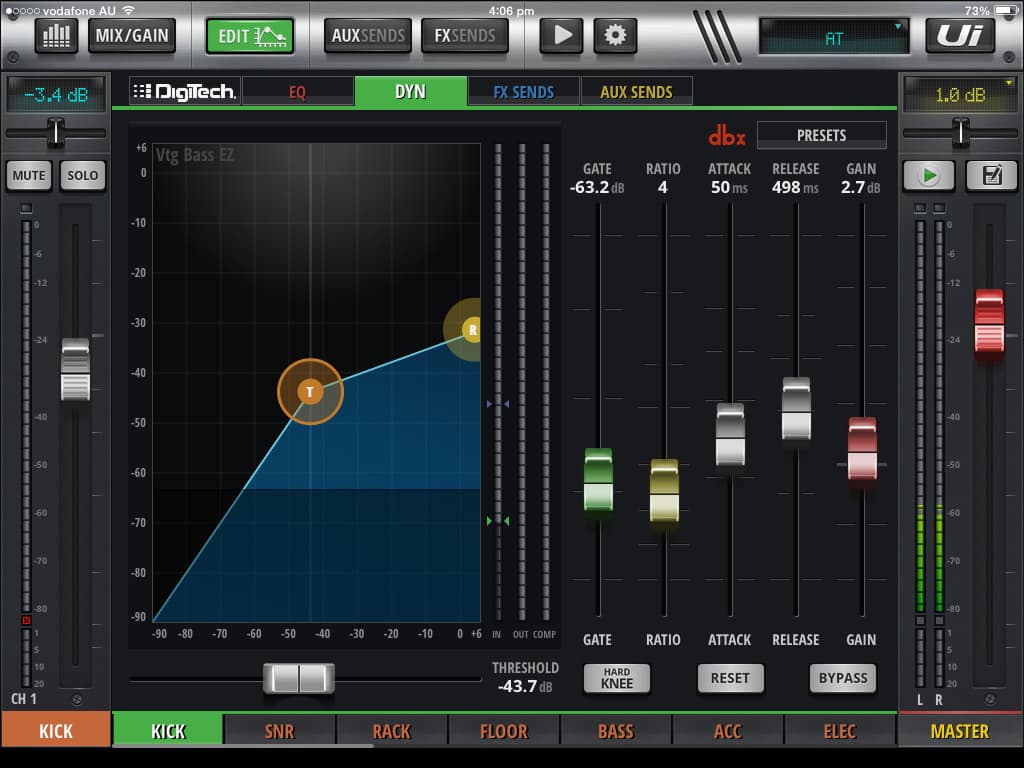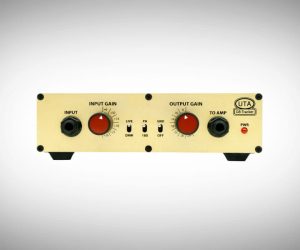
Rack ‘Em Up, Part 6: Preamps
iPads may be on the downward trend, but iPad-controlled mixers are coming out in droves. We round up everything currently out on the market for one giant rack mixer review.
The sound of Presonus’s XMax preamps wasn’t as strident as some of the other units, they seemed to have a little more of a rounded nature, without getting anywhere near muddy. And the gain range extends to 65dB, 5dB more than every other unit. The Allen & Heath was very up front and always really present, which worked well for a live system. The Mackie Onyx+ preamps were also high quality. The Behringer was quite balanced, but became a little unsettled at the top of the gain range. The Soundcraft was also good, but a hair noisier than the rest, with the Presonus presenting particularly clean, high-level output.
All of them could handle a reasonable amount of mic input level, with the lowest maximum of the group being +19dBu. Though none of the units sounded bad, as well as the I/O counts going up the more you pay, you also get returns in the quality of sound.

DYNAMICS
There’s a truckload of dynamics options in Behringer’s app. The Dynamics page has a compressor and expander, while the Gate page features three more expander types, a gate and ducker. Both pages split the controls into halves you can turn on or off: the main dynamics section, which includes threshold, ratio, etc; and the key/filter section, which besides having those two features, also has controls for attack, hold and release, and whether the compressor is set to Peak or RMS. It’s an odd division, you would expect the envelope controls and compression style to be paired with parameters like threshold. In this scheme, you can’t bed in your attack and release for that channel, and turn your key input on and off; they all go together. Interestingly, unlike the compressor section, the envelope characteristics in the Gate section seem to remain active whether or not you have that half turned on or off.
The compressors are very flexible and natural sounding, with 0-120ms attack times, up to four seconds of release, and the not-often-seen hold section, all paired with a handy envelope graphic. Alongside the Peak/RMS selections, there’s a Lin/Log option for aggressive or smooth operation. There’s also a wet/dry control for parallel compression effects and an output gain fader. The compressor has a continuously variable knee, and you can choose between band, hi- or low-pass filter keys with selectable frequencies, and plenty of variation in slope and Q.
If you want a little more vintage emulation in your sound, you can always insert a compressor, which eats up half of one of your four stereo effects engines. There’s Teletronix LA-2A, Fairchild, 1176 styles, and more. They all effectively function as parallel compressors though, as you still have to feed them input from your FX send. What it does allow you to do, though, is pull up a dual mono version of the plug-in and set different settings for two channels, which is unavailable in typical stereo effects send operation.

Soundcraft’s compressor was easy to setup and relatively transparent, but also had some nice dbx ‘ez’ presets that go a long way to giving that healthy sustain to instruments. You also get comprehensive metering of your In, Out, and Gain reduction. With a gain reduction meter also reflected in a smaller version below each channel meter. When the output starts to run out of headroom, the whole meter lights up red, which is a glimpse-able way of knowing you’re pushing too hard.

The compressor graph on Allen & Heath’s Qu-Pad is pretty comprehensive. When inserted into the chain, the gain reduction meters turn red. I say meters, because there’s both a downward-firing meter along the right of the graph, and a waveform display below it. It gives you a look at your gain reduction over time. There are four main compressor types; two manual (peak and RMS) and two auto (Slow Opto and Punchbag), the latter of which is a snappy VCA-style sounding compression. They all sound fantastic, and the usual controls are all present, including a switch to toggle between soft and hard knee. The graph also shows two separates lines, your standard knee graph, and a facsimile that is raised above it to show the output gain level.
The gate has a similar layout, in that the waveform is still present, this time to show you what audio is getting through. This was more useful to me than the compressor version; helpful for knowing whether your gate is triggering as expected or letting other sounds through.

Presonus has three switchable elements to its dynamics chain: Gate, Compressor and Limiter. The key section on the gate is well-featured, with a key filter, and a key listen button. You can also flip the gate to an expander function. The dynamics section allows you to toggle between auto or manual attack and release, as well switch the knee between hard and soft (though there’s no graphic change when you toggle between them). The limiter, by contrast, has a simple threshold control.

Mackie’s dynamics section is pretty straightforward on Master Fader. There’s no key inputs for the gate, or expander options. But both were very useful. A gentle soft knee, with medium/fast attack brought vocals forward with only a little bit of gain reduction. And you get it to pump if you really want to. Like the Allen & Heath, the output gain slider is reflected by a raised and lowered line in the graph.















RESPONSES